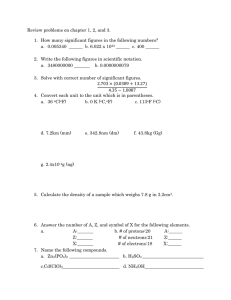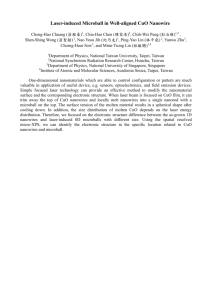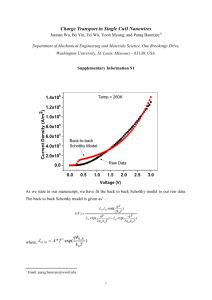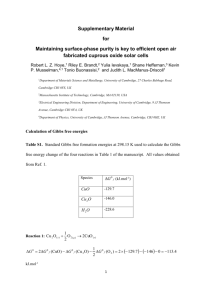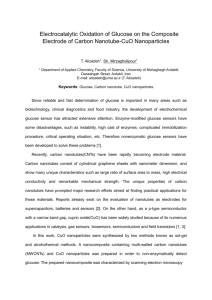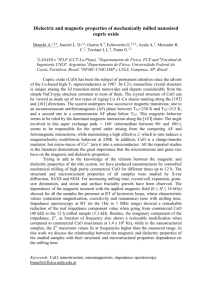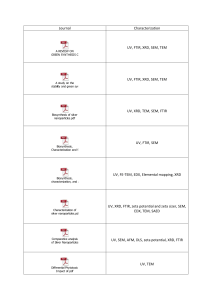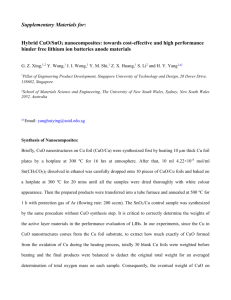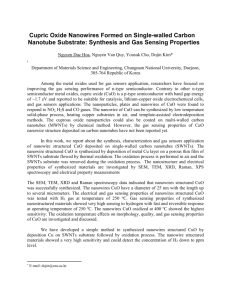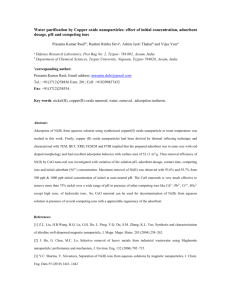Determination of thiourea using a carbon paste electrode decorated
advertisement
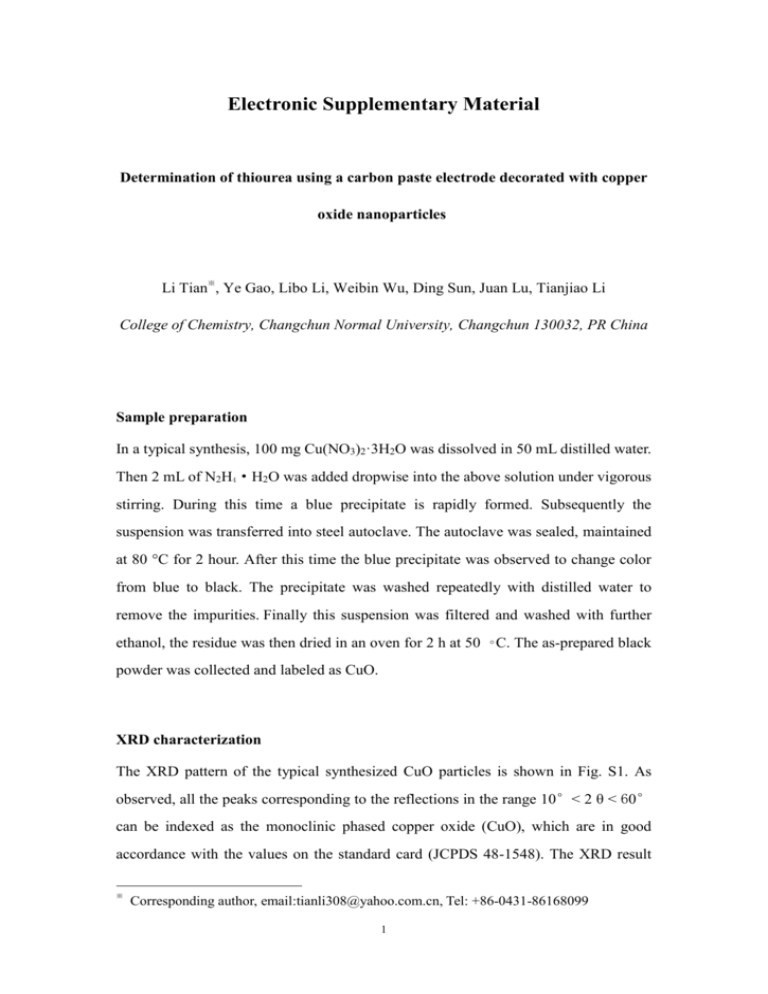
Electronic Supplementary Material Determination of thiourea using a carbon paste electrode decorated with copper oxide nanoparticles Li Tian※, Ye Gao, Libo Li, Weibin Wu, Ding Sun, Juan Lu, Tianjiao Li College of Chemistry, Changchun Normal University, Changchun 130032, PR China Sample preparation In a typical synthesis, 100 mg Cu(NO3)2·3H2O was dissolved in 50 mL distilled water. Then 2 mL of N2H4·H2O was added dropwise into the above solution under vigorous stirring. During this time a blue precipitate is rapidly formed. Subsequently the suspension was transferred into steel autoclave. The autoclave was sealed, maintained at 80 °C for 2 hour. After this time the blue precipitate was observed to change color from blue to black. The precipitate was washed repeatedly with distilled water to remove the impurities. Finally this suspension was filtered and washed with further ethanol, the residue was then dried in an oven for 2 h at 50 ◦C. The as-prepared black powder was collected and labeled as CuO. XRD characterization The XRD pattern of the typical synthesized CuO particles is shown in Fig. S1. As observed, all the peaks corresponding to the reflections in the range 10°< 2 θ < 60° can be indexed as the monoclinic phased copper oxide (CuO), which are in good accordance with the values on the standard card (JCPDS 48-1548). The XRD result ※ Corresponding author, email:tianli308@yahoo.com.cn, Tel: +86-0431-86168099 1 thus confirms the formation of CuO particles with pure phase, which is well crystallized. 002 111 Intensity (a. u.) 10000 8000 6000 4000 202 110 2000 020 202 0 10 20 30 40 2 / degree 50 60 Figure S1 XRD pattern of the typical synthesized CuO particles. Surface characterization Fig. S2 shows the SEM images for the product obtained. SEM image indicates that the as-prepared products are composed of nanorods with the length of 2 μm and one-dimensionally assembled nanoparticles with diameters of less than 100 nm. The peculiar structure of the nanomaterials can be expected to achieve the merits of high specific area and structural stability. The assembled crystals can provide a significant enhancement in effective electrode surface compared with its bulk solid counterpart. 2 Figure S2 SEM of CuO nanoparticles. 3
